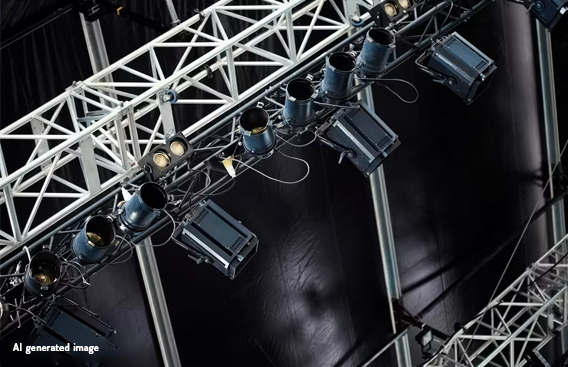Study into the prevalence of injury in the film, TV and theatre industries highlights the economic impact on cast and crew members and a lack of reporting of unsafe working conditions.
Most cast and crew working on theatrical productions have suffered injury at work, or have had an injury exacerbated by work, the findings of a new report indicate.
Titled The Show Must Go On Safely, the report from the Injury Prevention Consultancy shares results from a survey that explored the human toll and economic impact of injury in film, television and theatrical productions.
Out of 300 total responses, 85% of people working primarily in the stage sector said they have been injured at work, with the most common injuries listed as acute physical pain, stress, pressure to keep working despite injury, anxiety and emotional distress. This compares with 73% of respondents working in the screen sector reporting being injured at work.
A total 655 cases of cast injury were reported, consisting of 515 cases in stage production and 140 in screen production. Across all respondents, 12% reported injuries resulted in an inability to accept future work.
“The data shows a clear trend between the likelihood of cast injury in live performance, as demonstrated by the significantly higher proportion of injuries accountable to theatre production,” the report says.
“This may in part be attributable to the repetitive nature and generally higher degree of physical endurance required to sustain the course of a theatrical production run.”
Elsewhere in the report, 89% of respondents in the stage sector agreed the physical demands of their job had exacerbated or contributed to the recurrence of an existing injury, compared with 67% in the screen sector.
“The consistent pressures to avoid cancellation in theatre translate to more acute health impacts on the workforce, with higher injury rates and extensive mental health harms cited by both on-stage and backstage talent,” the report adds.
Financial losses
The report also sheds light on the financial impact of injuries, with some respondents reporting job losses, cancelled work days and loss of earnings as a result of cast injuries.
More than a third (37%) of behind-the-scenes theatre workers and 29% of on-stage theatre workers reported working on a production that experienced delays due to cast injury, while 21% of off-stage theatre workers and 17% of on-stage theatre workers experienced having work cancelled due to a cast injury.
These figures are considerably higher than the percentage of TV and film workers that had experienced work cancellations due to cast injuries, which equated to 6% of off-screen workers and no on-screen workers.
“The findings suggest that crew, the majority of whom are freelance in these sectors, are most at risk of financial hardship when cast injury occurs in production, a reality which risks perpetuating poor mental health, burn out and exhaustion,” the report says.
Lack of reporting
Almost half (47%) of respondents working in theatre said they had performed scene material they thought was unsafe, with 13% getting injured as a result. The figure was even higher among film and TV workers, with 61% performing material they deemed unsafe, with 16% getting injured as a result.
But respondents in neither sector were found likely to report safety concerns. Theatre workers were overall less likely to report their concerns, with only 4% revealing they always feel safe to do so, compared with 11% of respondents in the screen sector.
The reasons for not reporting safety concerns were similar across both sectors, with the most frequently reported reasons being fears of being ignored, the threat of not being rehired or the potential damage to professional reputation.
The report says both the stage and screen sectors curate a workplace culture where pressure to conform to the notion of “powering through” is a fixture of working life.
“This setting can make it especially challenging to facilitate a psychologically safe work environment, particularly in a majority freelance industry where job security is fickle and fear of ostracisation for not being a ‘team player’ is rife,” it adds.
In the report’s foreword, Jen Smith, chief executive officer of the Creative Industries Independent Standards Authority, writes that “the significance of this report at a time where these industries are in the midst of a welfare crisis cannot be overstated.”
“The findings are deeply compelling. They make a robust case for the integration of the role of Injury Prevention Consultant in production and drive home the urgent need for a fundamental shift in workplace culture,” Smith added.
[Arts Professional – original article]





